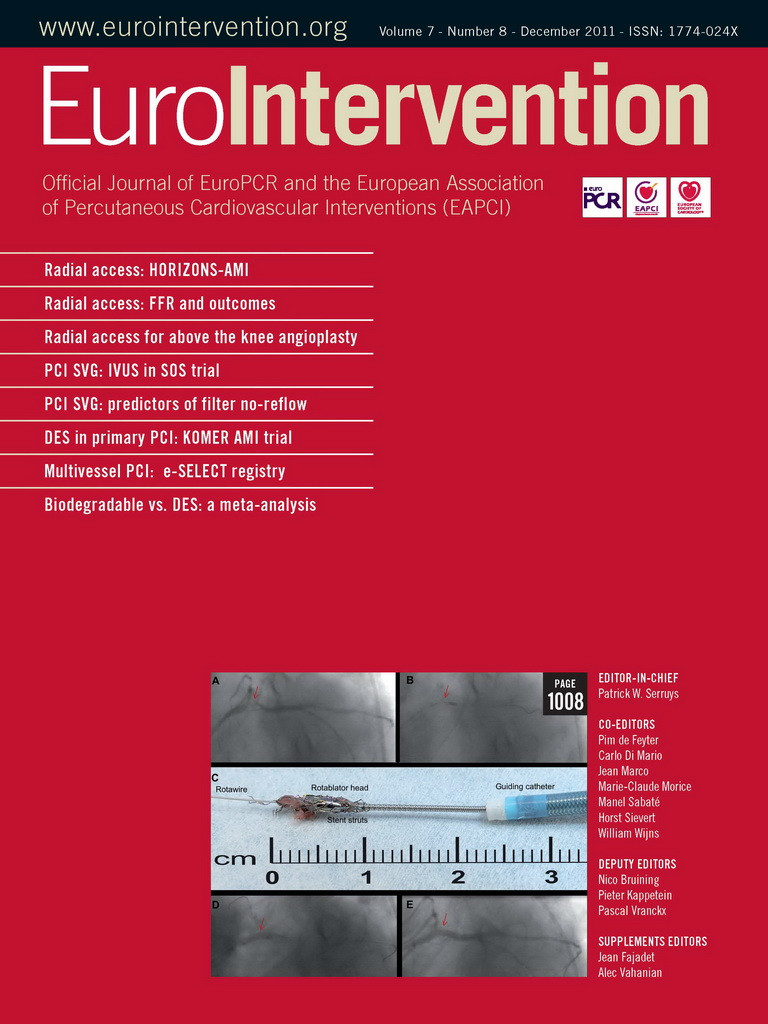Interventional cardiology, a relative young sub-specialty, witnessed an exponential growth in material design and technology. Therefore, different strategies and techniques may be applied during PCI. Atherectomy, a long-standing technique for debulking and/or treatment of heavily calcified lesions is considered challenging and at higher risk for complications. Despite this, both directional and rotational atherectomy have occasionally been suggested for the treatment of in-stent restenosis.
In this edition of the journal, two cases of severe in-stent restenosis (ISR) treated by atherectomy are reported. In both, atherectomy resulted unexpectedly in total stent extraction by the atherectomy device.
The first case reports ISR six months after implantation of a bare metal stent (BMS)1 while in the second case ISR occurred 17 months after drug-eluting stent implantation (DES)2. Even though the incidence and morphological pattern of ISR after BMS or DES implantation differ, the optimal treatment of ISR is, whichever stent being implanted, currently not yet clearly defined3. Nevertheless, there is a general agreement that DES implantation or the use of a drug-eluting balloon is the current treatment of choice. Proper lesion preparation by conventional or cutting balloon technology is of utmost importance. However, failure of balloon angioplasty often requires debulking by atherectomy. This technique had been used in the two cases reported here, one as a default and one as a bailout strategy. In both cases, the atherectomy device got entrapped in the lesion resulted in inadvertent stent extraction. Fortunately, no complication arose as a new stent could easily be implanted leading to a good final angiographic result and a successful clinical outcome.
Nevertheless, these complications are medical emergencies and because of their uniqueness require both common sense and a certain degree of imagination. Because of the inherent risk of emergency surgery, transcatheter retrieval by all means should be attempted first. Several methods have been advocated to retrieve a blocked rotablator burr3-8.At first, intra-coronary nitroglycerine should be given while gently retrieving the burr by pulling and rotating with the Dynaglide™ (Boston Scientific, Natick, MA, USA) in the on-off mode. If this method fails, the lesion should be wired and delivery of a small compliant balloon beside the burr should be attempted in order to open up the vessel and dislodge the burr. A final option is to cut off the rotablator shaft near the advancer, catch the distal part of the shaft by a snare advanced along the bare shaft, and try to retrieve the trapped burr7. In both cases reported in this issue, manually retrieval was successful without any severe injury to the vessel wall. Absence of vessel wall damage was demonstrated by OCT imaging in one case.
Atherectomy device entrapment, a first complication was followed by inadvertent stent extraction, a second complication. Actually, this latter complication is the first reported in the literature. Several cases of stent extraction have been described mostly after cutting balloon angioplasty or as a consequence of wire entrapment during bifurcation angioplasty.10-15 Potential consequences of stent extraction are dissection, perforation and/or thrombosis. Therefore, handling should be prompt with immediate stent implantation, which was done successfully in both patients.
Any medical intervention, particularly invasive ones, should have a clear indication that balances its risk/benefit prior to action. In the first case, the indication for rotablator use seemed appropriate as lesion preparation was unsuccessful. Although rare, atherectomy entrapment was managed successfully by simple, manual device retrieval. To a certain extent, force must have been applied to the system and the operators were lucky not to engage into more adverse events such as vessel perforation, rupture and/or aortic root dissection. These reports also underscore the importance of careful inspection of any retrieved material, something that might be overlooked easily.
The authors should be acknowledged for sharing these exceptional cases with the readers of the journal: forewarned is forearmed.
Conflict of interest statement
The authors have no conflict of interest to declare.
References

